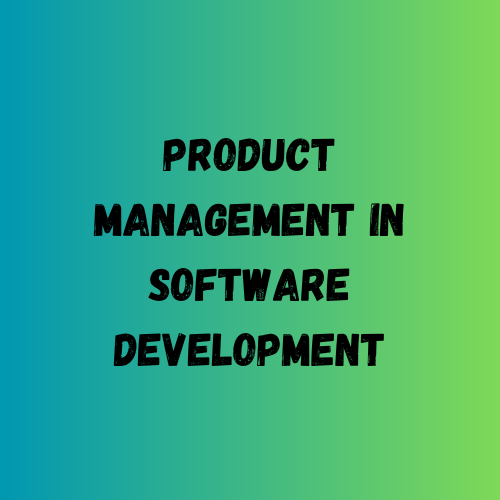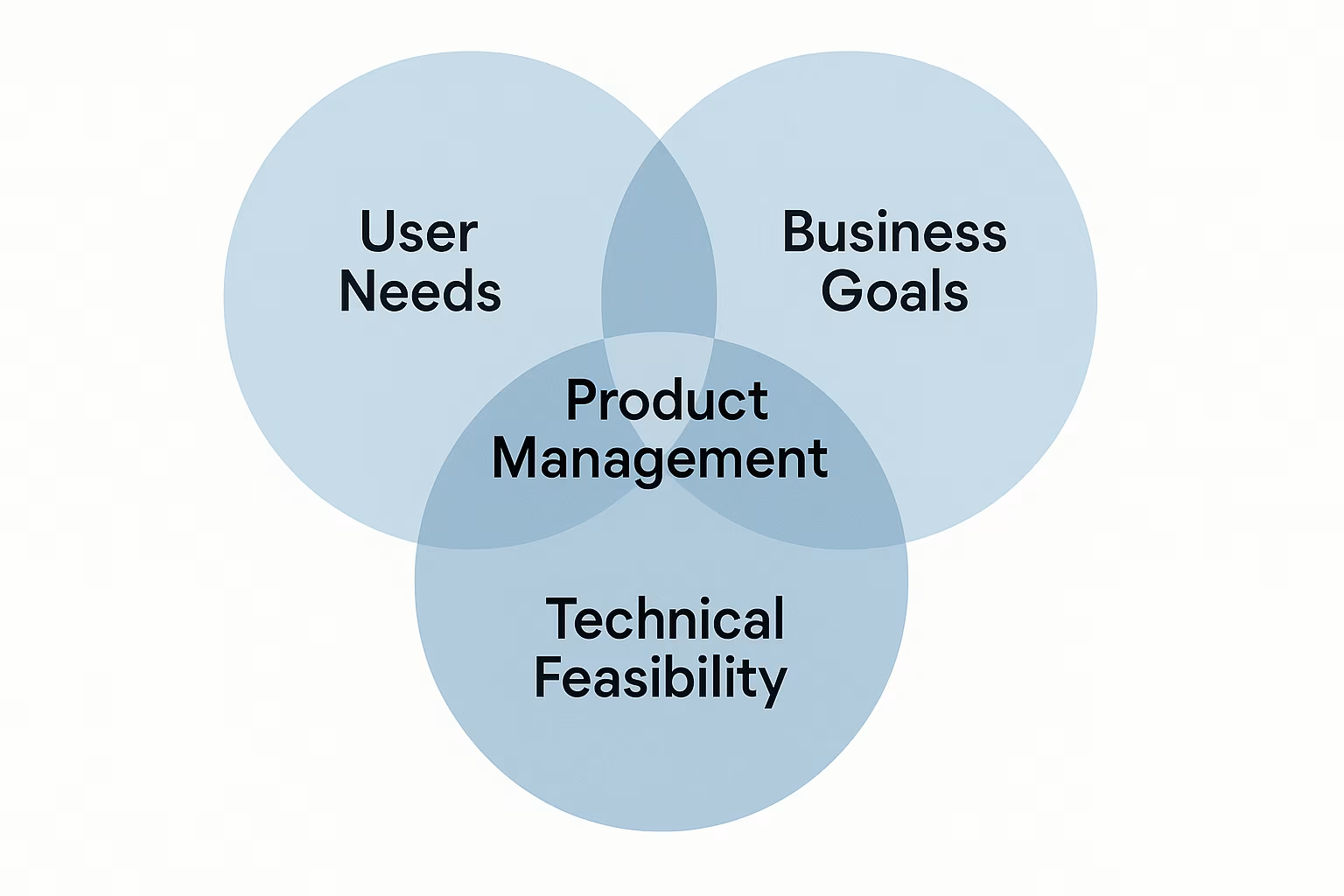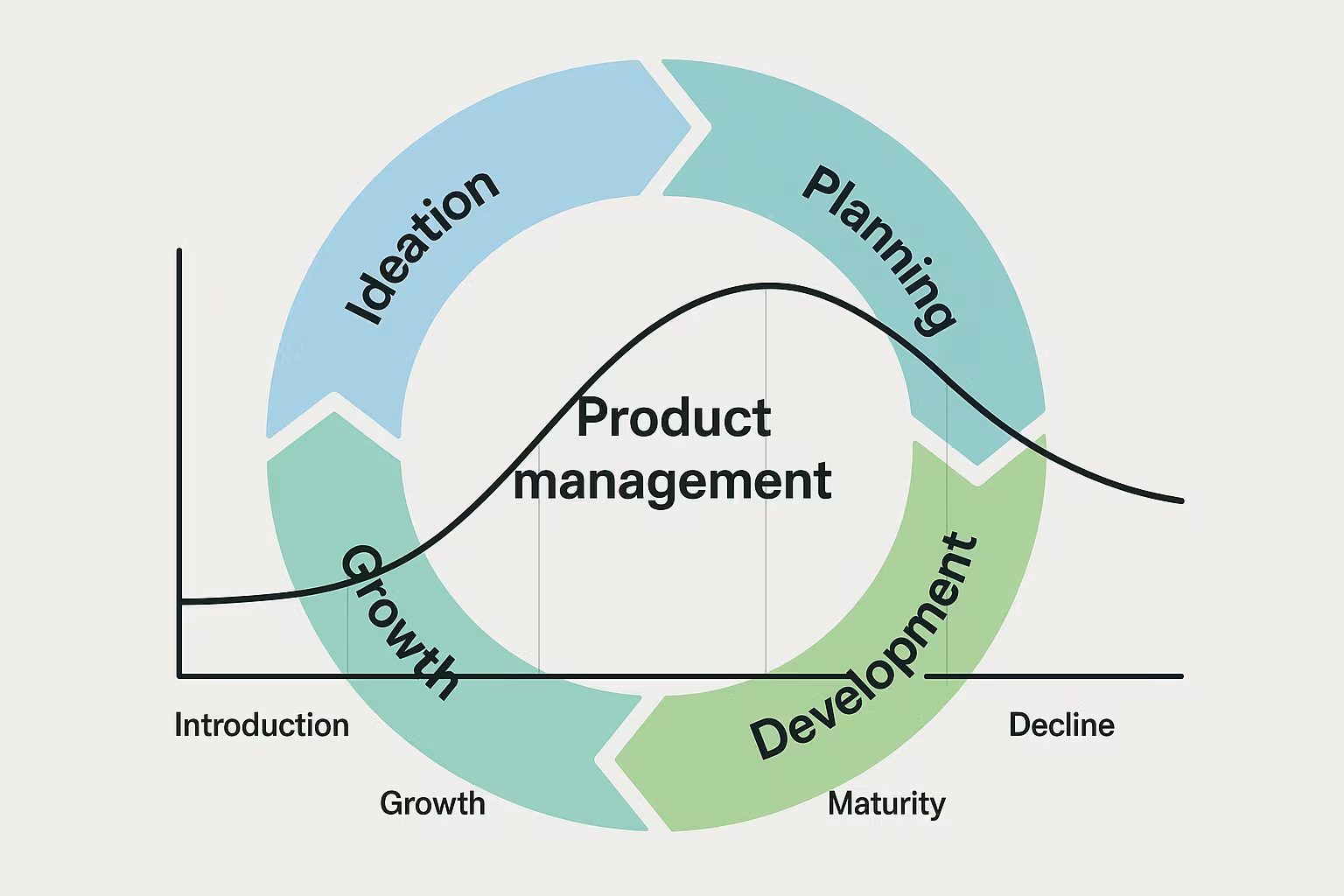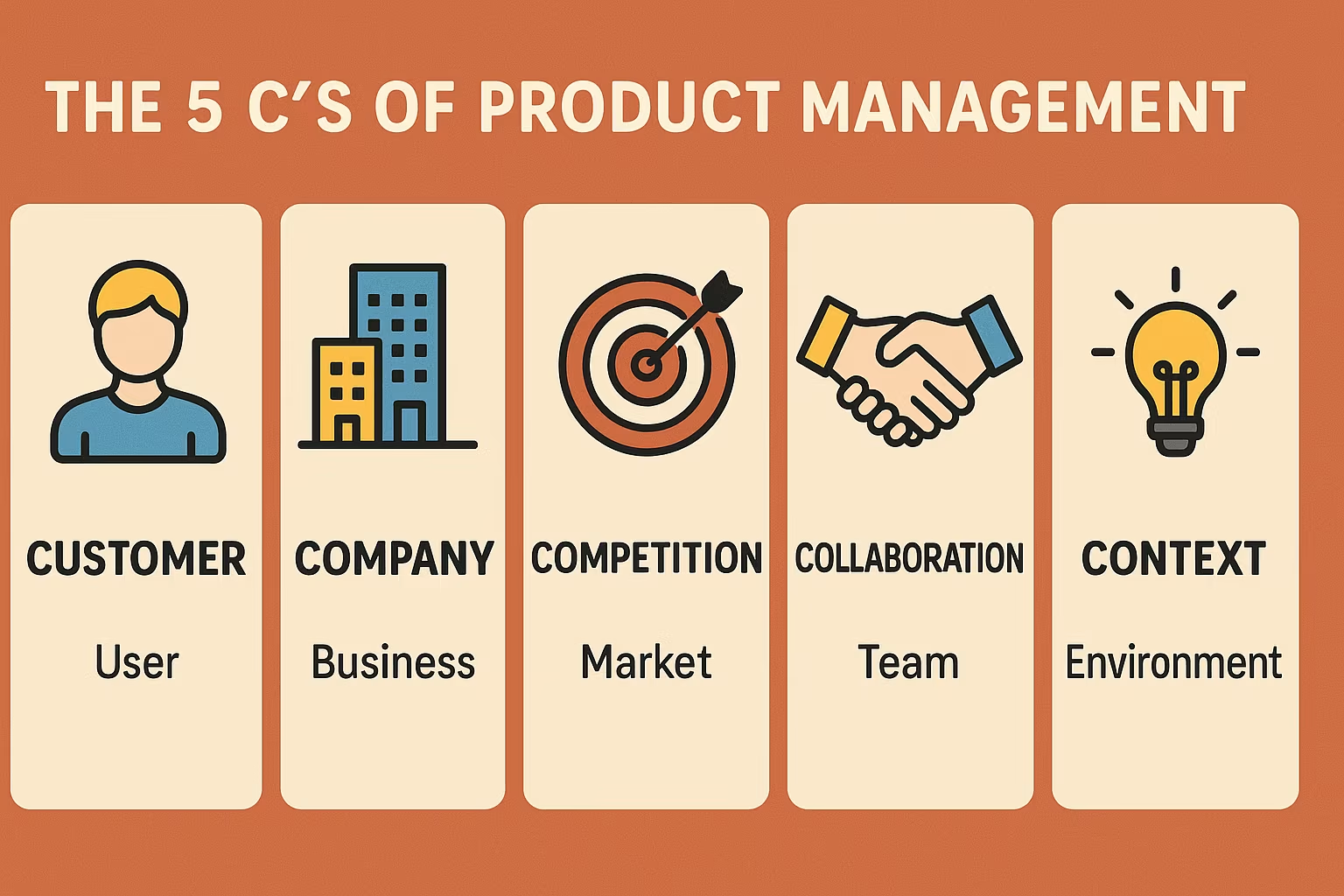Home > software_development > Product Management Concepts in Software Engineering.
Product Management Concepts in Software Engineering.
PM functions as a guide for the entire circle of a product, from ideation to launch and beyond.
By :Thomas Inyang🕒 1 Jun 2025

Introduction
Building a personal project is fun until you find yourself in a team of developers working on a project without a concise direction; then you’d understand the need for a structured roadmap. This is where product managers come in to restructure the workflow of the product implementation.
This article is for beginner and intermediate product managers, and at the end of this article, you will have a solid understanding of the following aspects of product management:
- What product management in software engineering is.
- A product lifecycle (the 4 stages and what you need to do as a PM to create your first product).
- PM skill sets and tools, roles, and framework.
What is Product Management in Software Engineering?
It functions as a guide for the entire circle of a product, from ideation to launch and beyond. Think about product management as a scale that balances the critical domains of a product, such as user needs, business goals, and technical feasibility. The person that organizes the guide and the workflow is called a product manager (PM); he/she ensures that what gets built is not only possible but also desirable and viable.
Product management in Software Engineering is more focused on digital products such as mobile/web apps, SaaS (Software as a Service) platforms used by the team you work with, internal tools, APIs (Application Programming Interfaces), and even operating systems.
Why Do We Need Product Management?
Based on experience working with a product manager, the role they play in product management includes the following:
- Provides a roadmap that guides the development team towards the most impactful solutions.
- PMs ensure that the product meets the end users' demands by constantly validating ideas and focusing on return on investment (ROI).
- PMs act as the central hub, fostering seamless communication and ensuring everyone is aligned on the product vision and goals.
- A PM defines what the future of the product looks like using a clear vision guide.
Is Product Management an IT Job?
IT focuses on managing a company's internal technology infrastructure, systems, and support; this department ensures employees have the tools they need to work efficiently. For Product Management, the primary concern is centered around what products or services should generate revenue and provide value to end-users in the market. While both PM and IT work hand in hand and are likely to use the same internal tools, their roles are different.
IT is mostly operational, while PM is market-driven and user-centric.
The Main Focus of Product Management.
Product management focuses on solving real problems by looking deeply into the following :
- To understand the users' pain points, desires, and behaviors through research, interviews, and data analysis.
- To make decisions that will elevate the business metrics, such as revenue, growing the user base, improving retention, or gaining market share.
- Market Opportunity: PMs constantly scan the competitive landscape and identify unmet needs or emerging trends that represent opportunities for the product to capture or create new markets.

The Product Lifecycle & Stages
Building a software product is an ongoing journey, and product management should be considered throughout the journey, guiding the product through distinct phases to ensure its continued relevance and success. From Idea to Iteration
The 4 Stages of Product Management
While different frameworks exist, a commonly accepted approach divides Product Management work into four cyclical stages:
Ideation & Discovery: This is where it all begins. PMs identify problems, conduct market research by talking to users, and think of possible solutions. This stage answers the question, "What problem are we solving, and for whom?" The main goal is to ensure the product satisfies the needs of the users.
Planning & Strategy: When there is a solution to a problem, the PMs start to define the product vision, strategy, roadmap (user stories), clear objectives, and key results (OKRs). "What are we building, and how will it deliver value?" will be answered in this stage.
Development & Execution: PMs work in tandem with the engineering, design, and QA teams to ensure the product is built based on the specification.
See Also: CI/CD Pipelines in Web Development.
Growth & Optimization: After the product is launched, the PM's work isn't done. The PM will be observing the product performance in the market by gathering feedback and optimizing the product after A/B testing.
These stages are not strictly linear but often iterative and overlapping, especially in agile development environments.

How to Create Your First Product.
To build a successful product, identify a painful problem that a significant group of people experience and provide a solution to the problem.
These are what you should consider when building your project:
1. Defining your target audience by knowing their demographics, behaviors, and motivations is crucial.
2. You should validate your solution idea (MVP) with potential users before building. Ask them if they will use it. You can use mockups, surveys, or even simple landing pages.
See Also: How to Get Started with Web Development.
3. Gather Feedback & Iterate: Showcase your MVP (Most Viable Product) to a small group, collect their feedback, and use it to make improvements. This iterative loop is fundamental to agile product development.
4. Launch & Market: After the product has undergone all the iterative test processes, ensure the product is launched in the targeted audience marketplace.
See Also: What You Need To Know About E-commerce Development.
5. Measure & Optimize: Always keep track of the product’s key performance indicators (KPIs) by analyzing user behavior data, and use the insight to make informed decisions (product optimization).
The Product Manager's Toolkit: Skills, Roles, and Responsibilities.
Product managers are charged with leadership roles built on influence, expertise, and strategic vision.
What are The Essential Skills for Product Management
These skills vary based on sectors, but here are several core skills needed for product management that are universal:
1. Communication (Verbal & Written): Articulating complex ideas clearly, crafting compelling narratives, and writing precise product specifications (e.g., user stories, requirement documents).
2. User Empathy & Research: Thinking about the end users.
See Also: How to Create Product for Real People
3. Prioritization & Decision Making: To always evaluate and prioritize what to build next, balancing user needs, business value, and technical constraints.
4. Analytical & Data Interpretation: To use A/B test results and market data to inform decisions and measure success.
5. Leadership & Influence Style: This requires strong interpersonal skills and the ability to build consensus.
6. Business Acumen: Understanding market dynamics, competitive landscapes, revenue models, and the financial implications of product decisions.
Note: for "product manager," the above skills apply. If it refers to manufacturing production, the skills differ significantly, focusing on supply chain, logistics, and factory operations.
Technical Acumen for PMs in Web Development
This is a frequently asked question: "Should PM be technically inclined in the web development domain?" and "Does product management require coding?"
The short answer is yes, technical inclination is a significant advantage, but coding proficiency is generally NOT required.
Why PM Should Be Technically Inclined:
1. Better communication with engineers will foster trust and efficient collaboration because you can speak their language.
2. To make informed decision-making in order to avoid potential technical debt and scalability.
3. To identify opportunities/constraints that can disrupt product development.
4. You will be respected by the engineers because they know you can contribute meaningfully to technical discussions, even if you aren't writing code.

The 3 Major Pillars of Product Management
1. Technical Product Management (TPM).
2. Growth Product Management.
3. Consumer Product Management.
These three pillars are intrinsically linked, and a strong PM skillfully navigates their intersection.
The 5 C's of Product Management
1. Company's vision, capabilities, resources, and strategic objectives.
2. Customers' needs, behaviors, and how they perceive value.
3. Competitors' products' strengths and weaknesses of competing, and finding opportunities for differentiation.
4. Collaborating with the broader ecosystem that influences your product's success.
5. Checking (context) for factors (economic, legal, technological, and societal trends) that can impact your product and market.
The P's of Product Management
Problem the product aims to solve.
Product’s features, design, functionality, and how it delivers value.
People: users, team members (engineers, designers), sales, marketing, and executives.
Process: The methodologies and workflows used to manage the product (e.g., Agile, Scrum, Lean UX).
Performance: Measuring the product's success against key metrics and business objectives.

FAQ: Common Misconceptions & Clarifications
Product vs. Project vs. Program Management
These terms are often used interchangeably when the word "PM" is used. Here are the different roles they play.
A product manager defines the "what" and "why" of the product vision, strategy, and features in order to meet user needs and business goals.
The project manager's duty is to plan, execute, and close a specific project within defined constraints (e.g., a new feature launch or a system upgrade). answering the "how" and "when" questions.
A program manager oversees all related projects or products and ensures interdependencies and success.
Conclusion
This post was centered on Product Management in Software Engineering, and the following was discussed:
- What product management in software engineering is.
- A product lifecycle (the 4 stages and what you need to do as a PM to create your first product).
- PM skill sets and tools, roles, and framework.
You were made to understand that a PM acts as the critical bridge between user needs, business objectives, and technical realities, ensuring that software isn't just built, but built right.
Share your thoughts in the comments below! What's the most challenging or most rewarding aspect of Product Management for you?